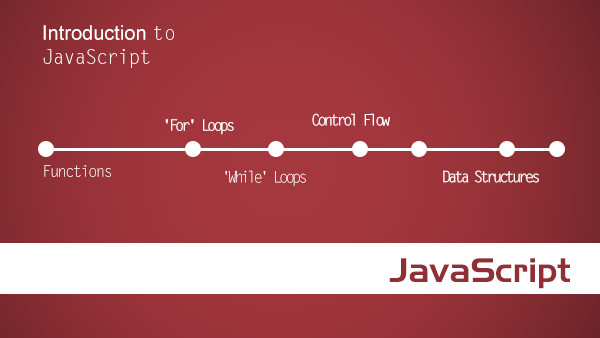本文提供了详细的全栈开发教程,介绍了技术栈、环境搭建和实战项目等内容。教程中详细讲解了HTML/CSS、JavaScript、React、Vue等前端技术,以及Node.js、Django等后端技术。
全栈开发简介 什么是全栈开发全栈开发是指一个人能够从头到尾地开发一个完整的软件产品,从客户端的前端开发到服务器端的后端开发,甚至涉及到数据库管理和系统架构设计。全栈开发的目标是开发者能够掌握前后端技术,从而拥有更全面的技术视野,使开发者能够更好地理解软件开发的各个层面,提高项目开发效率。
全栈开发的优势全栈开发的优势主要体现在以下几个方面:
- 全面的技术视野:全栈开发者能够全面掌握软件开发的各个环节,从而更好地理解整个软件系统的运行机制,能够从架构层面优化系统设计。
- 提高开发效率:全栈开发者可以同时负责前端和后端的开发工作,减少了团队成员之间的协调成本,提高了开发效率。
- 灵活应对需求变化:全栈开发者可以灵活切换开发任务,根据团队需求快速调整开发方向。
- 掌握更多技能:全栈开发要求开发者掌握更多的技能,从而在职业生涯中具有更多的选择和发展空间。
全栈开发需要掌握多种技术栈,包括前端技术和后端技术。以下是常用的前端和后端技术栈:
前端技术栈
- HTML/CSS:构成网页的基本结构和样式
- JavaScript:实现网页的交互逻辑
- 框架:如React、Vue等,用于构建复杂的前端应用
后端技术栈
- Node.js:用于构建服务器端应用的JavaScript运行时
- Python Django:基于Python的Web开发框架
- MySQL:关系型数据库管理系统
- MongoDB:非关系型数据库管理系统
全栈开发需要选择合适的开发工具和环境,以下是一些常用的开发工具及其安装步骤:
代码编辑器
- VS Code:一个功能强大的代码编辑器,支持多种编程语言。
- PyCharm:专为Python开发者设计的集成开发环境。
- WebStorm:适用于前端开发的集成开发环境。
浏览器
- Chrome:支持各种Web技术,如HTML5、CSS3、JavaScript等。
- Firefox:支持Web标准的浏览器,适合测试跨浏览器兼容性。
安装步骤
- 访问官网下载对应的操作系统版本的安装包。
- 按照安装向导完成安装。
- 安装完成后,启动开发工具,进行配置和设置。
示例代码
# 下载VS Code
wget https://update.code.visualstudio.com/latest/linux-x64/stable
# 安装VS Code
sudo apt-get install ./latest数据库安装
- MySQL
# 安装MySQL sudo apt-get install mysql-server
sudo service mysql start
- **MongoDB**
```bash
# 安装MongoDB
wget -qO - https://www.mongodb.org/static/pgp/server-4.4.asc | sudo apt-key add -
echo "deb [ arch=amd64,arm64 ] https://repo.mongodb.org/apt/ubuntu focal/mongodb-org/4.4 multiverse" | sudo tee /etc/apt/sources.list.d/mongodb-org-4.4.list
sudo apt-get update
sudo apt-get install -y mongodb-org
# 启动MongoDB服务
sudo systemctl start mongod开发环境的搭建包括本地开发环境和远程开发环境的搭建。本地开发环境用于开发和测试,远程开发环境用于部署和维护。
本地开发环境
- 安装Node.js
# 安装Node.js sudo apt-get update sudo apt-get install nodejs
sudo apt-get install npm
2. **安装Django**
```bash
# 安装Python
sudo apt-get install python3 python3-pip
# 安装Django
pip3 install django远程开发环境
- 服务器环境搭建
# 更新软件包列表 sudo apt-get update
sudo apt-get install apache2
安装MySQLsudo apt-get install mysql-server
启动MySQL服务sudo service mysql start
2. **部署应用**
```bash
# 部署Django应用
git clone https://github.com/yourusername/yourproject.git
cd yourproject
pip install -r requirements.txt
python manage.py migrate
python manage.py runserverHTML基础
HTML(HyperText Markup Language)是用于创建网页的标准标记语言。以下是几个HTML基础元素:
-
网页结构
<!DOCTYPE html> <html> <head> <title>示例网页</title> </head> <body> <h1>欢迎来到示例网页</h1> <p>这是第一段文字。</p> </body> </html> -
链接
<a href="https://www.example.com">访问示例网站</a> - 列表
<ul> <li>列表项1</li> <li>列表项2</li> </ul>
CSS基础
CSS(Cascading Style Sheets)用于控制HTML元素的样式。以下是几个CSS基础属性:
-
样式表
<style> body { background-color: #f0f0f0; } h1 { color: #333; font-size: 24px; } </style> - 类选择器
<style> .highlight { background-color: yellow; } </style>
<p class="highlight">这是一个高亮的段落。</p>
3. **ID选择器**
```html
<style>
#header {
background-color: #333;
color: #fff;
}
</style>
<div id="header">
<h1>标题</h1>
</div>JavaScript是一种广泛使用的编程语言,用于在网页中添加交互性。以下是几个JavaScript基础概念:
- 变量与类型
let message = "Hello, World!"; let number = 42; let isTrue = true;
console.log(typeof message); // string
console.log(typeof number); // number
console.log(typeof isTrue); // boolean
2. **函数**
```javascript
function greet(name) {
return `Hello, ${name}`;
}
console.log(greet('Alice')); // Hello, Alice- 事件处理
<button id="clickme">点击我</button> <script> document.getElementById('clickme').addEventListener('click', function() { alert('按钮被点击了'); }); </script>
React
React是一个由Facebook开发的前端库,用于构建用户界面。以下是React的基础概念:
- 组件
import React from 'react';
function Hello() {
return <h1>Hello, World!</h1>;
}
export default Hello;
2. **状态**
```javascript
import React, { useState } from 'react';
function Counter() {
const [count, setCount] = useState(0);
return (
<div>
<p>当前计数:{count}</p>
<button onClick={() => setCount(count + 1)}>增加</button>
</div>
);
}
export default Counter;- 案例分析:用户登录界面
import React, { useState } from 'react'; import axios from 'axios';
function Login() {
const [email, setEmail] = useState('');
const [password, setPassword] = useState('');
const handleSubmit = (e) => {
e.preventDefault();
axios.post('/api/login', { email, password })
.then(response => {
console.log(response.data);
})
.catch(error => {
console.error(error);
});
};
return (
<form onSubmit={handleSubmit}>
<input type="email" value={email} onChange={e => setEmail(e.target.value)} />
<input type="password" value={password} onChange={e => setPassword(e.target.value)} />
<button type="submit">登录</button>
</form>
);}
export default Login;
### Vue
Vue是一个渐进式前端框架,用于构建动态的Web应用。以下是Vue的基础概念:
1. **组件**
```html
<template>
<div>
<h1>Hello, World!</h1>
</div>
</template>
<script>
export default {
name: 'HelloWorld'
}
</script>- 状态
<template> <div> <p>当前计数:{{ count }}</p> <button @click="increment">增加</button> </div> </template>
<script>
export default {
data() {
return {
count: 0
};
},
methods: {
increment() {
this.count++;
}
}
}
</script>
3. **案例分析**:用户登录界面
```html
<template>
<form @submit.prevent="handleSubmit">
<input type="email" v-model="email" />
<input type="password" v-model="password" />
<button type="submit">登录</button>
</form>
</template>
<script>
export default {
data() {
return {
email: '',
password: ''
};
},
methods: {
handleSubmit() {
axios.post('/api/login', { email: this.email, password: this.password })
.then(response => {
console.log(response.data);
})
.catch(error => {
console.error(error);
});
}
}
}
</script>MySQL基础
-
安装MySQL
sudo apt-get update sudo apt-get install mysql-server -
创建数据库
CREATE DATABASE mydatabase; - 创建表
USE mydatabase;
CREATE TABLE users (
id INT AUTO_INCREMENT PRIMARY KEY,
name VARCHAR(100),
email VARCHAR(100)
);
4. **插入数据**
```sql
INSERT INTO users (name, email) VALUES ('Alice', 'alice@example.com');
INSERT INTO users (name, email) VALUES ('Bob', 'bob@example.com');MongoDB基础
-
安装MongoDB
wget -qO - https://www.mongodb.org/static/pgp/server-4.4.asc | sudo apt-key add - echo "deb [ arch=amd64,arm64 ] https://repo.mongodb.org/apt/ubuntu focal/mongodb-org/4.4 multiverse" | sudo tee /etc/apt/sources.list.d/mongodb-org-4.4.list sudo apt-get update sudo apt-get install -y mongodb-org -
启动MongoDB服务
sudo systemctl start mongod - 创建集合
use mydatabase;
db.users.insertMany([
{ name: "Alice", email: "alice@example.com" },
{ name: "Bob", email: "bob@example.com" }
]);
4. **查询集合**
```javascript
db.users.find();Node.js基础
-
安装Node.js
sudo apt-get update sudo apt-get install nodejs - 创建Node.js应用
const http = require('http');
const hostname = '127.0.0.1';
const port = 3000;
const server = http.createServer((req, res) => {
res.statusCode = 200;
res.setHeader('Content-Type', 'text/plain');
res.end('Hello, World!\n');
});
server.listen(port, hostname, () => {
console.log(Server running at http://${hostname}:${port}/);
});
3. **案例分析**:用户登录接口
```javascript
const express = require('express');
const bodyParser = require('body-parser');
const mongoose = require('mongoose');
const app = express();
app.use(bodyParser.json());
mongoose.connect('mongodb://localhost:27017/mydatabase', { useNewUrlParser: true, useUnifiedTopology: true });
const User = mongoose.model('User', { email: String, password: String });
app.post('/api/login', (req, res) => {
const { email, password } = req.body;
User.findOne({ email, password })
.then(user => {
if (user) {
res.json(user);
} else {
res.status(401).json({ message: 'Invalid credentials' });
}
})
.catch(error => res.status(500).json(error));
});
app.listen(3000, () => console.log('Server running on port 3000'));Python Django基础
-
安装Django
sudo apt-get update sudo apt-get install python3 python3-pip pip3 install django -
创建Django项目
django-admin startproject myproject cd myproject python3 manage.py runserver -
创建Django应用
python3 manage.py startapp myapp - 创建模型
from django.db import models
class User(models.Model):
name = models.CharField(max_length=100)
email = models.EmailField()
5. **案例分析**:用户登录视图
```python
from django.shortcuts import render, redirect
from django.contrib.auth.models import User
from django.contrib.auth import authenticate, login
def user_login(request):
if request.method == 'POST':
email = request.POST['email']
password = request.POST['password']
user = authenticate(request, username=email, password=password)
if user is not None:
login(request, user)
return redirect('home')
else:
return render(request, 'login.html', {'error': 'Invalid credentials'})
return render(request, 'login.html')在开始项目开发之前,需要对项目需求进行详细分析。以下是一个简单的项目需求:
- 项目名称:用户管理系统
- 功能需求:
- 用户注册和登录
- 用户信息展示和编辑
- 用户列表展示
- 技术栈:
- 前端:React
- 后端:Node.js + Express
- 数据库:MySQL
前端实现
- 用户注册和登录
import React, { useState } from 'react'; import axios from 'axios';
function Login() {
const [email, setEmail] = useState('');
const [password, setPassword] = useState('');
const handleSubmit = (e) => {
e.preventDefault();
axios.post('/api/login', { email, password })
.then(response => {
console.log(response.data);
})
.catch(error => {
console.error(error);
});
};
return (
<form onSubmit={handleSubmit}>
<input type="email" value={email} onChange={e => setEmail(e.target.value)} />
<input type="password" value={password} onChange={e => setPassword(e.target.value)} />
<button type="submit">登录</button>
</form>
);}
export default Login;
2. **用户信息展示和编辑**
```javascript
import React, { useState, useEffect } from 'react';
import axios from 'axios';
function UserProfile() {
const [user, setUser] = useState(null);
useEffect(() => {
axios.get('/api/user')
.then(response => setUser(response.data));
}, []);
const handleSave = (e) => {
e.preventDefault();
axios.put('/api/user', user)
.then(response => console.log(response.data))
.catch(error => console.error(error));
};
return (
<form onSubmit={handleSave}>
<input type="text" value={user.name} onChange={e => setUser({ ...user, name: e.target.value })} />
<input type="email" value={user.email} onChange={e => setUser({ ...user, email: e.target.value })} />
<button type="submit">保存</button>
</form>
);
}
export default UserProfile;后端实现
- 用户注册和登录
const express = require('express'); const bodyParser = require('body-parser'); const mongoose = require('mongoose');
const app = express();
app.use(bodyParser.json());
mongoose.connect('mongodb://localhost:27017/mydatabase', { useNewUrlParser: true, useUnifiedTopology: true });
const User = mongoose.model('User', { email: String, password: String });
app.post('/api/register', (req, res) => {
const { email, password } = req.body;
const user = new User({ email, password });
user.save()
.then(user => res.json(user))
.catch(error => res.status(500).json(error));
});
app.post('/api/login', (req, res) => {
const { email, password } = req.body;
User.findOne({ email, password })
.then(user => {
if (user) {
res.json(user);
} else {
res.status(401).json({ message: 'Invalid credentials' });
}
})
.catch(error => res.status(500).json(error));
});
app.listen(3000, () => console.log('Server running on port 3000'));
2. **用户信息展示和编辑**
```javascript
app.get('/api/user', (req, res) => {
User.findById(req.user.id)
.then(user => res.json(user))
.catch(error => res.status(500).json(error));
});
app.put('/api/user', (req, res) => {
User.findByIdAndUpdate(req.user.id, req.body, { new: true })
.then(user => res.json(user))
.catch(error => res.status(500).json(error));
});部署到服务器
-
安装Node.js和MongoDB
sudo apt-get update sudo apt-get install nodejs wget -qO - https://www.mongodb.org/static/pgp/server-4.4.asc | sudo apt-key add - echo "deb [ arch=amd64,arm64 ] https://repo.mongodb.org/apt/ubuntu focal/mongodb-org/4.4 multiverse" | sudo tee /etc/apt/sources.list.d/mongodb-org-4.4.list sudo apt-get update sudo apt-get install -y mongodb-org -
启动MongoDB服务
sudo systemctl start mongod - 部署Node.js应用
git clone https://github.com/yourusername/yourproject.git cd yourproject npm install node app.js
调试
-
查看日志
tail -f /var/log/syslog - 调试代码
try { // 代码 } catch (error) { console.error(error); }
以下是推荐的在线学习资源,这些网站提供了丰富的教程和实战项目:
社区与论坛推荐- Stack Overflow
- Stack Overflow 是一个问答网站,程序员可以在上面提问和回答编程相关的问题。
- GitHub
- GitHub 是一个代码托管平台,开发者可以在上面交流项目和代码。
- Reddit
- Reddit 有许多技术子版块,如 r/programming 适合讨论编程问题。
- 多做项目:通过实战项目提升自己的实际开发能力。
- 持续学习:跟随技术趋势,不断学习新的技术和工具。
- 社区交流:加入技术社区,与同行交流学习,提升自己的技术水平。

 随时随地看视频
随时随地看视频



